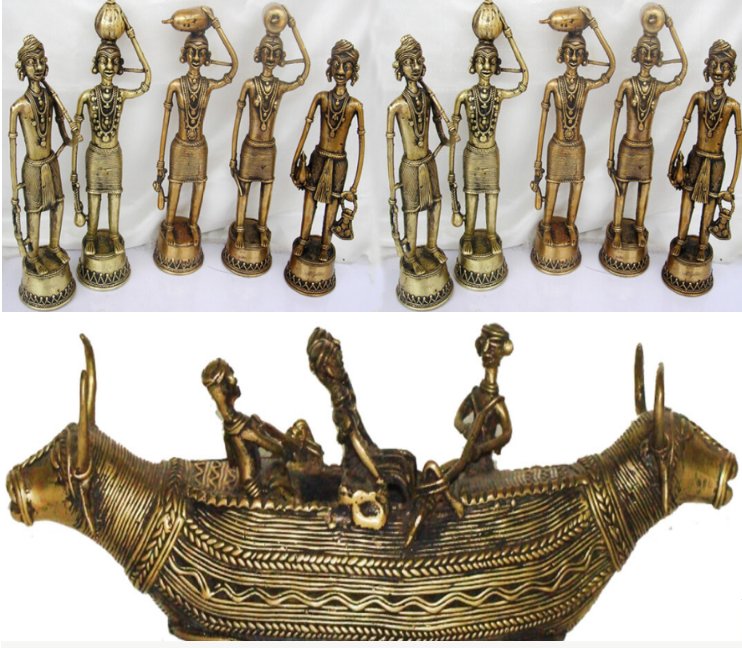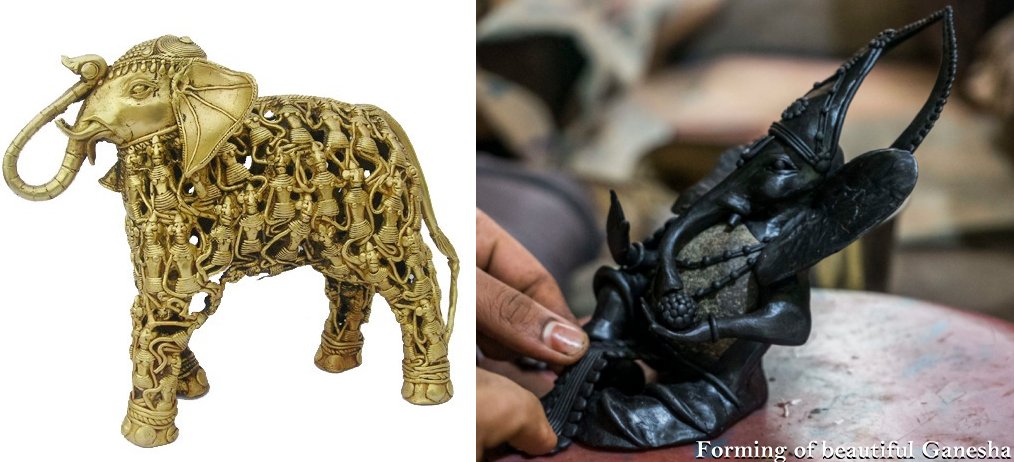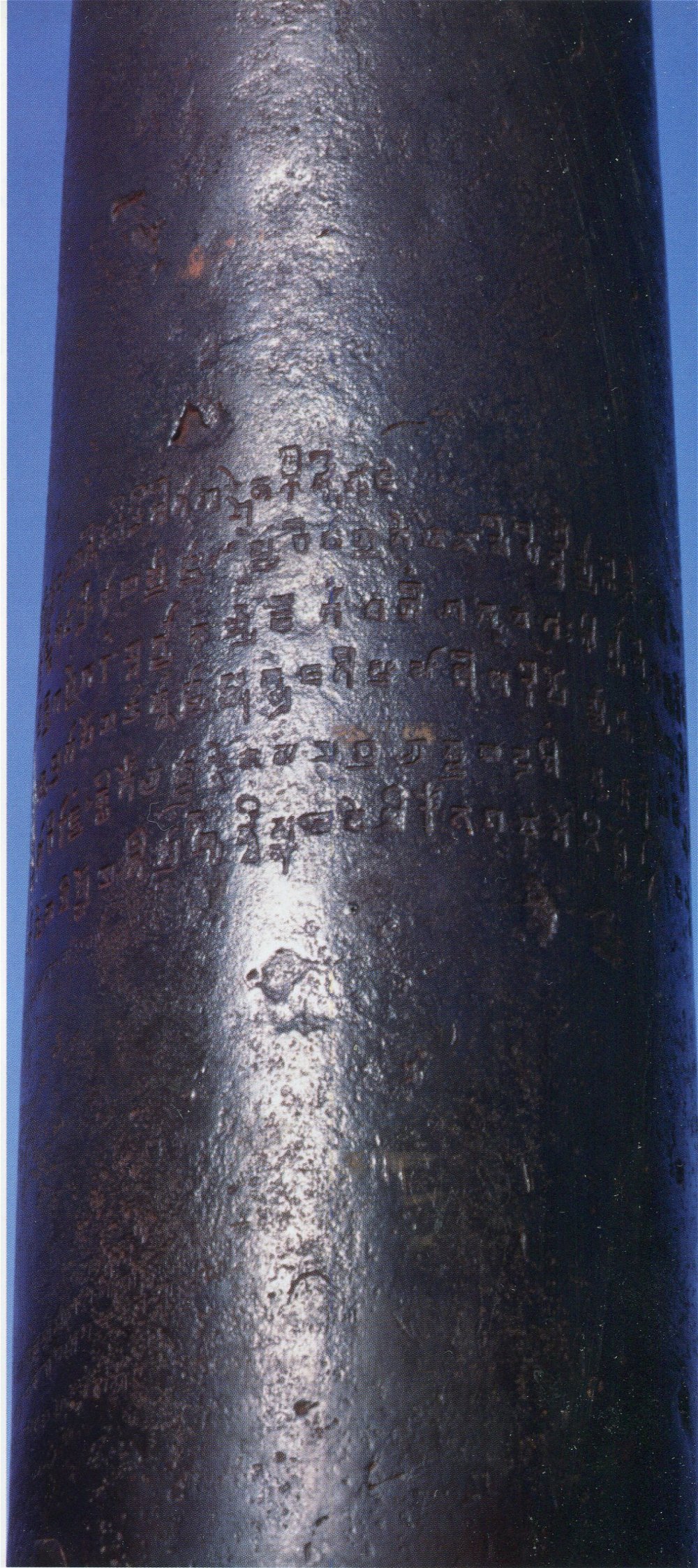Telangana And Great Ancient Iron Masterwork Of Skilled Blacksmiths Of India
A. Sutherland - AncientPages.com - India has been widely known for its iron and steel since ancient times.
The Indian state of Telangana, located on the Deccan Plateau, in southern India, is most probably be a cradle of the great tradition of metallurgy. Iron Age may have come into existence in this particular region of India much before the rest of the world.
Telangana Metal Crafts. Image credits: telanganatourism.gov.in
Skilled metallurgists of India are famous. Their great masterwork is for example - the Delhi Iron Pillar, a spectacular column of cast iron 23 feet (7 meters) high, weighing approximately 6 tons with a diameter of 16.4 inches stands in the courtyard of Kutb Minar in Delhi, India. It’s famous for the rust-resistant composition of the metals used in its construction.
There are numerous early literary references to steel from India from Mediterranean sources including one from the time of Alexander (3rd c. BC.)
Blacksmiths In Ancient India
Ancient Indians produced iron capable of withstanding corrosion, most likely due to the high phosphorus content of the iron produced during those times.
The blacksmiths of Northern Telangana, like most of the blacksmith communities of south India, fall within the Viswakarma (the Hindu god of arts and crafts) caste group and comprises five craft communities; blacksmiths, goldsmiths, bronze-smiths, carpenters, and stonemasons or sculptors.
Recently archaeologists unearthed several artifacts, including small knives and blades besides earthen pots dating back to about 2,200 BC, which pushes back Iron Age in India.
According to experts who tested the metal objects at the National Geophysical Research Institute (NGRI) date them to between 1800 BC and 2,400 BC, which means their approximate date of manufacturing is 2200 BC.
Ancestral bell metal craft from Telangana. Photo credits: © 2015 Telangana Tourism
“In India, it was understood that the Iron Age came into being around 1,800 BC in the Lahuradeva site in Uttar Pradesh. But this latest development shows that the Iron Age started much before that, at least in our country,” according to Prof KP Rao who said that “it only goes to show that our ancestors had a rudimentary yet good knowledge about wielding weapons made of metals.
The column – made up of 98% wrought iron of impure quality – not in any way welded together – seems to have been forged as a single, gigantic piece of iron. It is believed that the top of the column originally supported a figure of Garuda – “Messenger of the Gods”
Telangana state is one of several states, in which skilled metalsmiths live and work. They specialize in a very beautiful form of ancient bell metal craft known as Dhokra (or Dokra) and their work concentrates in the village is located about 59 km from Adilabad district headquarters and nearly 264 km from Hyderabad.
Left: Generations’ long Docra (Dhokra ) craft tradition – has the amazing feature that the pieces are crafted out of a single piece of metal and have no joints. Right: Wootz steel was highly prized across several regions of the world over nearly two millennia and one typical product made of this Indian steel came to be known as the Damascus swords. A splendid example is the sword of Tipu Sultan.
Telangana's tribal metal craft is also known as Ojjis who makes brass metal art objects using the complex but the perfect lost wax technique for the casting of the metal.
Method Of Making Dokra
The technique of lost wax casting is being practiced in India for more than 4000 years and even to this day, it is in use by these craftsmen. This was clearly observed in the objects recovered from the ruins of Mohenjo-Daro. These Dokra artifacts are mainly made in brass and are highly unique wherein the pieces do not have any form of joints. The whole object is fully handcrafted.
The method of making Dokra is done by combining the metallurgical skills with that of the lost wax technique. The handicrafts are known for combining metallurgical skills with a wax technique for making artifacts of distinctive look and beauty. The lost-wax technique is a distinct form where the mold is used only once and broken, which makes the figure one of its kind in the handicraft market.
There are two processes of lost wax casting. The first one is Solid casting which is the method followed in the South and hollow casting, practiced in other states. The hollow casting method makes use of the clay core method, treated as the traditional method.
This workmanship is practiced by the Woj community, who create the idols and figures. There are about 50 families in the Adilabad district who are skilled in this ancestral craft.
At first, the skilled artist makes a clay core, which is filled with bee’s wax and resin and shaped, then it is covered with clay and there are drains made on the mold so the wax can be drained after the mold is heated.
Subsequently, the wax is replaced by molten brass, gold, bronze, or silver which is left for hardening inside the mold. Then the mold is removed for retrieving the object inside and finally, the object is polished. The entire process takes weeks to complete depending on the complexity of the sculpture.
The designs made are metal figurines, elephants, folk motifs, peacocks, horses, and also household articles such as measuring bowls.
Dhokra represents the exquisite variety and glory of Telangana’s master handicrafts.
Written by – A. Sutherland AncientPages.com Staff Writer
Copyright © AncientPages.com All rights reserved. This material may not be published, broadcast, rewritten or redistributed in whole or part without the express written permission of AncientPages.com
Expand for references
More From Ancient Pages
-
 Why Was The Spartan Army So Successful?
Ancient History Facts | Apr 15, 2022
Why Was The Spartan Army So Successful?
Ancient History Facts | Apr 15, 2022 -
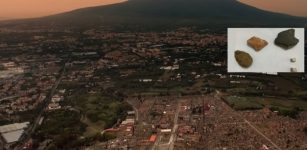 Stolen Artifacts Returned To Pompeii – Believed To Be Cursed -They Brought Misfortunes To A Woman And Her Family
Artifacts | Oct 13, 2020
Stolen Artifacts Returned To Pompeii – Believed To Be Cursed -They Brought Misfortunes To A Woman And Her Family
Artifacts | Oct 13, 2020 -
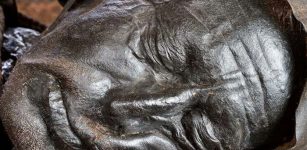 Mystery Of Europe’s Bog Body Phenomenon Solved By Scientists
Archaeology | Jan 12, 2023
Mystery Of Europe’s Bog Body Phenomenon Solved By Scientists
Archaeology | Jan 12, 2023 -
 On This Day In History: Amelia Earhart’s First Solo Ocean Flight – On Jan 11, 1935
News | Jan 11, 2017
On This Day In History: Amelia Earhart’s First Solo Ocean Flight – On Jan 11, 1935
News | Jan 11, 2017 -
 What Routes Did Homo Sapiens Take On His Way From Africa To Europe And Asia? Out Of Africa Path Examined
Archaeology | Dec 26, 2021
What Routes Did Homo Sapiens Take On His Way From Africa To Europe And Asia? Out Of Africa Path Examined
Archaeology | Dec 26, 2021 -
 Buccaneers And Privateers Were Pirates – But What’s The Difference Between Them?
Ancient History Facts | Nov 5, 2016
Buccaneers And Privateers Were Pirates – But What’s The Difference Between Them?
Ancient History Facts | Nov 5, 2016 -
 Kingdoms Of Judah And Babylon Remained In Long-Lasting Conflict
Featured Stories | Sep 5, 2019
Kingdoms Of Judah And Babylon Remained In Long-Lasting Conflict
Featured Stories | Sep 5, 2019 -
 Baffling North American Ancient Skulls Contradict Historical Timelines And Mainstream Theories
Ancient Mysteries | Jun 11, 2020
Baffling North American Ancient Skulls Contradict Historical Timelines And Mainstream Theories
Ancient Mysteries | Jun 11, 2020 -
 Archaeologists And Historians Argue With Geneticists Over Controversial Viking DNA Study
Archaeology | Feb 24, 2017
Archaeologists And Historians Argue With Geneticists Over Controversial Viking DNA Study
Archaeology | Feb 24, 2017 -
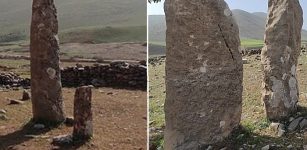 Unique Headstones Of Kela Mazin Cemetery In Kurdistan Are Probably 3,000 Years Old Or Much More
Archaeology | May 7, 2022
Unique Headstones Of Kela Mazin Cemetery In Kurdistan Are Probably 3,000 Years Old Or Much More
Archaeology | May 7, 2022 -
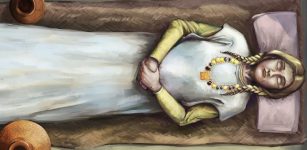 Spectacular Anglo-Saxon Burial Uncovered – Here’s What It Tells Us About Women In Seventh-Century England
Featured Stories | Dec 17, 2022
Spectacular Anglo-Saxon Burial Uncovered – Here’s What It Tells Us About Women In Seventh-Century England
Featured Stories | Dec 17, 2022 -
 2,000-Year-Old Rock Art Sites Discovered In Jalapão, Brazil
Archaeology | Mar 11, 2024
2,000-Year-Old Rock Art Sites Discovered In Jalapão, Brazil
Archaeology | Mar 11, 2024 -
 Lost Medieval Kingdom Found In West Sussex, UK
Archaeology | Jul 1, 2024
Lost Medieval Kingdom Found In West Sussex, UK
Archaeology | Jul 1, 2024 -
 The Mysterious Metaphysical World Of Isaac Newton
Ancient Mysteries | Aug 21, 2018
The Mysterious Metaphysical World Of Isaac Newton
Ancient Mysteries | Aug 21, 2018 -
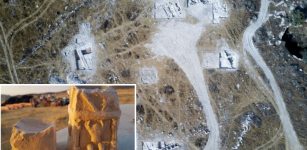 Large Mysterious 2,000-Year-Old Structure Discovered At The Center Of A Military Training Area In Israel
Archaeology | Dec 3, 2017
Large Mysterious 2,000-Year-Old Structure Discovered At The Center Of A Military Training Area In Israel
Archaeology | Dec 3, 2017 -
 Mystery Of Monte Albán – Ancient City ‘At The Foot Of The Heavens’ Built By The Zapotecs
Civilizations | Apr 22, 2016
Mystery Of Monte Albán – Ancient City ‘At The Foot Of The Heavens’ Built By The Zapotecs
Civilizations | Apr 22, 2016 -
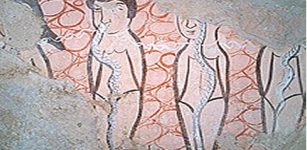 Ancient Monastery In The Middle Of ‘Syria’s Stonehenge’ – Underground Caves, Tombs, Stone Circles Older Than Pyramids
Civilizations | Nov 13, 2015
Ancient Monastery In The Middle Of ‘Syria’s Stonehenge’ – Underground Caves, Tombs, Stone Circles Older Than Pyramids
Civilizations | Nov 13, 2015 -
 Skull Discovered In Ancient City Of Euromus Shows Neurosurgery Performed 2,200 Years Ago
Archaeology | Aug 2, 2019
Skull Discovered In Ancient City Of Euromus Shows Neurosurgery Performed 2,200 Years Ago
Archaeology | Aug 2, 2019 -
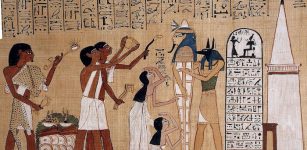 Evidence From Ancient Egypt Shows Smallpox Stretches Back At Least 3,000 Years
Archaeology | Jan 11, 2023
Evidence From Ancient Egypt Shows Smallpox Stretches Back At Least 3,000 Years
Archaeology | Jan 11, 2023 -
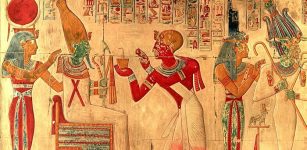 Osiris: Enigmatic And Powerful God In Ancient Egypt
Egyptian Mythology | Jun 13, 2017
Osiris: Enigmatic And Powerful God In Ancient Egypt
Egyptian Mythology | Jun 13, 2017

